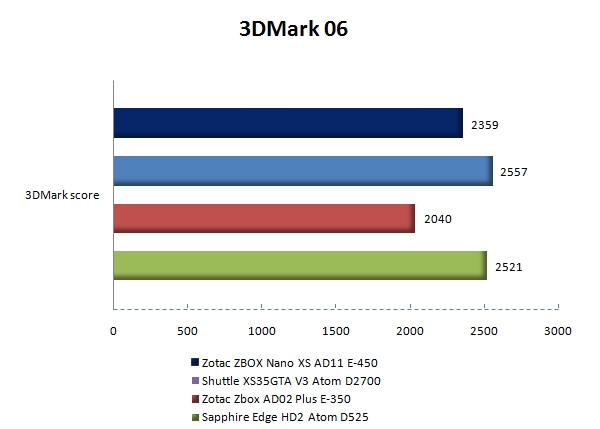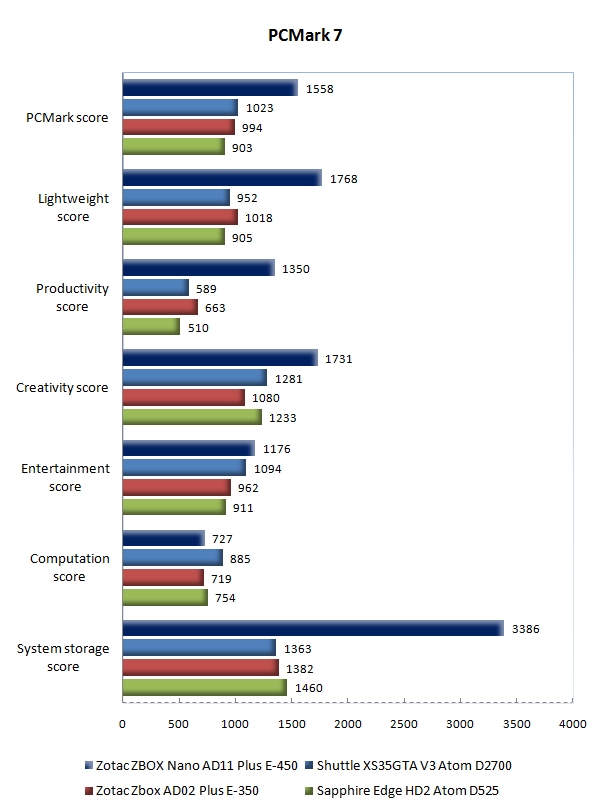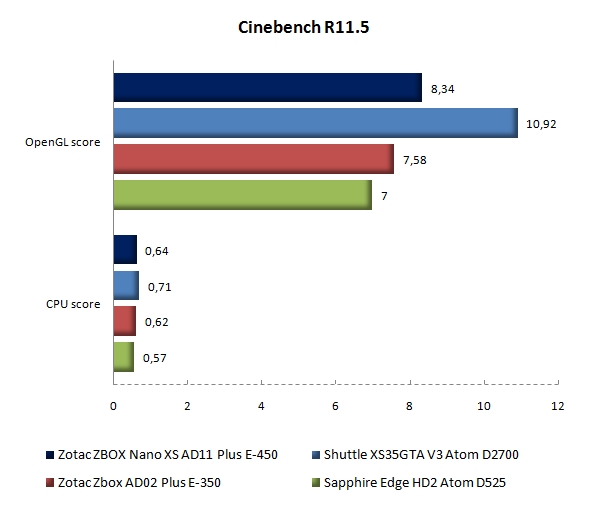Index
Closer look and benchmarks
When plugged in, the top part of the Zotac features a tiny LED light in the bottom left corner that glows red when powered off and green when powered on. Next to it is a blue HDD activity LED. The top is dominated by a large green glowing circle that can be switched off in BIOS, in case you find it too tacky. Intel-based ZBOX systems feature a blue circle, while VIA models proudly glow in yellow.
As noted earlier, Zotac ZBOX Nano XS comes bundled with MCE-compatible remote and an additional USB IR receiver. Bear in mind that it also has an integrated IR receiver below the start button and the additional USB IR receiver is used in case you want to use the supplied VESA mount and hang the ZBOX on the back of your monitor or TV making the integrated one inaccessible. (Note that if you plug the USB IR receiver it is advisable to disable the integrated one in BIOS since there is a possibility that it will read both signals and double all inputs from the remote).
Benchmarks
In 3DMark 06 Zotac’s ZBox Nano XS AD11 is, as expected, faster than the ZBox AD02 with E-350 APU, but still falls behind Shuttle XS35GTA V3 and its Atom D2700 and Radeon HD 7410M combination as well as Sapphire’s Edge HD2 with Atom D525 and Nvidia ION 2.

PCMark 07 tells a completely different story and the Nano XS AD11 Plus takes a clear lead against mini-PCs that we had a chance to put it against. Of course, the main reason is Kingston’s mSATA SSD as in Computation test, ZBox Nano is just below both Shuttle and Sapphire’s mini-PCs and just a tad bit faster than the Zotac AD02 with E-350 APU. 
Cinebench R11.5 pretty much confirms all previous tests and Zotac’s ZBox Nano XS AD11 Plus with its E-450 APU ends up faster than ZBox Nano AD02 with E-350 as well as Sapphire Edge HD2 with Intel Atom D525+ION2 system.




